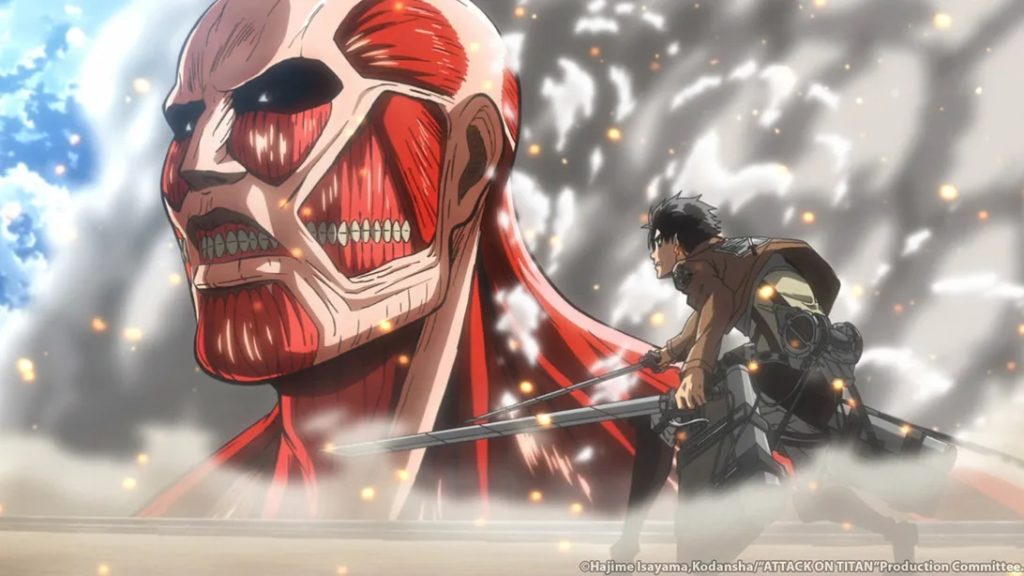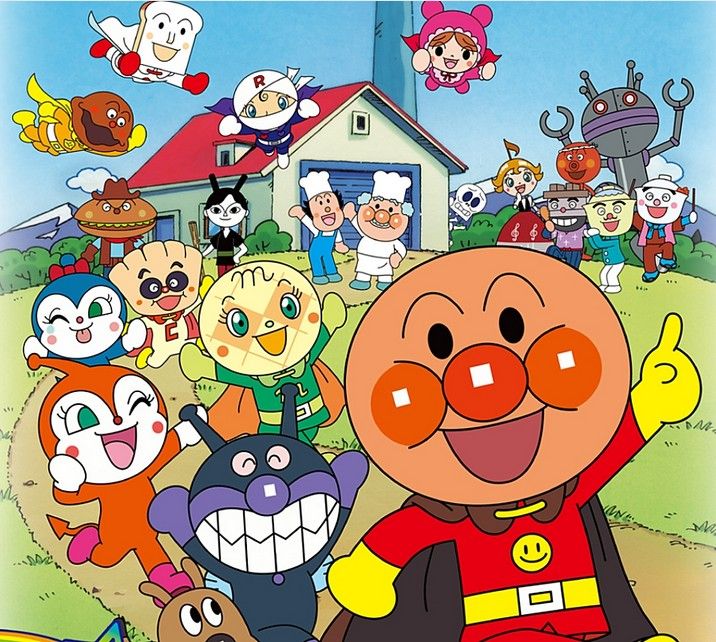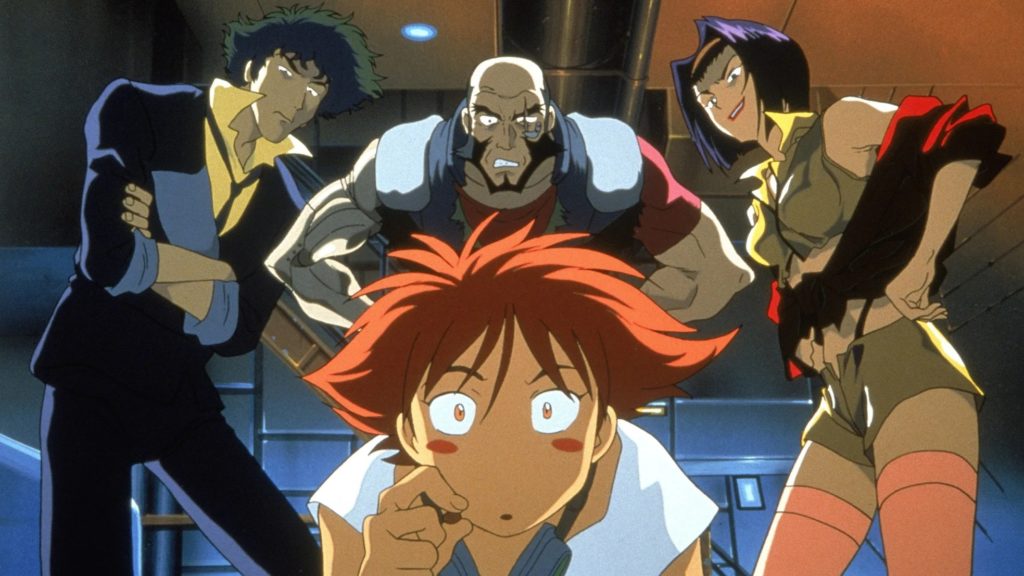Books: Crunchyroll Essential Anime
July 4, 2023 · 0 comments
By Andrew Osmond.

As long as new fans are stepping tentatively into anime, there’ll always be a need for an up-to-date guidebook, helping them tell their moe from their mecha. There’ve been a great many English-language guides in the last three decades. At one end, the mammoth Anime Encyclopedia encompasses the whole medium. At the other, books focus on tiny slices of anime, like Ghibliotheque’s recent guide to the Ghibli canon.
Crunchyroll Essential Anime is closer to Ghibliotheque’s scale, but looks at a wider range of titles. The book’s 228 pages consist of fifty entries, on what the book argues are “Essential” anime titles. Most titles get four pages apiece. It’s arranged chronologically – the first entries are on Astro Boy and Speed Racer in the 1960s, and the last is on Demon Slayer.
Breaking down the entries some more, there are five on titles that were made (or began) before 1980, and six more from the 1980s. More than half the book’s entries are from the 1990s and noughties, with only the last thirteen debuting after 2010. These include JoJo’s Bizarre Adventure (David Production’s version, though that’s not specified), Attack on Titan, and Sword Art Online. The latter entry focuses on the original show, but specifies it was included less for its own merits than for fuelling the umpteen other anime set in alternate worlds.

The book lists two writers on the cover. Even in Britain, fans may know Patrick Macias as the editor (now editor-in-chief) of the magazine Otaku USA, though he was writing about anime back in the 1990s. He shares the cover credit with author Samuel Sattin, whose work crosses fiction and non-fiction, including a graphic novel of Cartoon Saloon’s Ghibli-esque Wolfwalkers. Sattin and Macias write nearly forty of the entries, while the others are by writers including Deb Aoki of the Mangasplaining podcast and Matt Schley of the Japan Times.
Everything about the approach is sensible, as is the book’s enthusiastic tone. But one fundamental point is worth making straight off.
In the forward, the authors talk about what constitutes an “essential” anime. Macias poses the question, “What are some of the titles someone needs to know to get an understanding of anime?” For Sattin, it’s a matter of “choosing what we thought was relevant to where anime has arrived globally at this point of time.” But despite the word “globally,” this book’s conception of essential anime is skewed inescapably towards American fandom.

It’s a simple point. If you ask, “What anime were most important in Japan?” then there are umpteen crucial titles that go mostly unmentioned in the Crunchyroll book. For example, the book does have an entry on Pokémon, but not on two far longer-lived children’s anime in Japan, Doraemon and Anpanman (pictured above); nor on the longest animated series in the world, the family anime Sazae-san which has run since 1969.
As for other missing milestones, you could start with the massively influential Heidi in 1974, a deep seed bed for Ghibli and Totoro. Or there are sports sagas such as the boxing epic Tomorrow’s Joe, the girls’ volleyball series Attack No.1, or the 1980s soccer saga Captain Tsubasa. How about Little Witch Sally, the first magic girl anime, or the massive PreCure franchise? Or GeGeGe no Kitaro, Shigeru Mizuki’s spooky series that’s been adapted repeatedly in anime over seven decades? Or the hundreds of episodes of the “hapless cop” farce Kochikame?
The answer is obvious. None of these anime had a big impact in American fandom, nor in British fandom, for that matter. But that brings up another point. Ask fans from different countries what are the “essential” anime and you’ll get some extremely different answers. France is a prime case. In French fandom, the essential shows include the 1975 mecha series Goldorak, or as it was originally known in Japan, Grendizer, created by Go Nagai. Other “essential” anime in France range from Candy Candy, a mammoth 1970s saga about an intrepid globetrotting girl, to the “magic boy” franchise Saint Seiya.

Or take Britain. We didn’t get Astro Boy and Speed Racer, which American fans regard as foundational. No, the shows that first exposed British kids to anime were Marine Boy and Battle of the Planets (adapted from Gatchaman). Neither get entries in the Crunchyroll book; nor do the Japanese-French entries Mysterious Cities of Gold or Ulysses 31 which snagged British kids in the 80s.
You could multiply these examples. Guillermo del Toro made Pacific Rim because he saw Mazinger Z in Mexico. Bong Joon-Ho, future director of Parasite, was obsessed as a South Korean student by Hayao Miyazaki’s Future Boy Conan. Conan was also big in the Middle East, renamed Adnan wa Lina; so was Captain Majid, the Arabic version of Captain Tsubaba.
None of this is a big knock at the Crunchyroll book; it’s aimed at American fans, whose perspective is as valid as any other. But it’s a shame that it doesn’t acknowledge how American fandom’s “essential” anime differs from those in anime’s home country. I’m fairly sure Japanese readers would scratch their heads at the book’s inclusion of Vampire Hunter D and Ninja Scroll, whose reputations were made by the specific circumstances of the American market. As for Fist of the North Star, the same Japanese readers would be bemused by how the entry focuses on the gory 1986 film, as opposed to the cheesy TV cartoon version that primary schoolers could watch.

With this very extended proviso, the book is a decent intro for new fans starting to explore the medium. It’s not an art book, but the pictures are enjoyably colourful and varied, even interspersed with many text-only pages. But the text isn’t fully watertight; I found a few very obvious flubs, even knowing only some of the titles.
So, the original 1995 Ghost in the Shell film is described as running 125 minutes, which is forty minutes out – one of the most impressive things about Oshii’s film is how compact it is! In the Cowboy Bebop entry, the composer Yoko Kanno is said to have “scored” Porco Rosso and Cardcaptor Sakura, whereas her influence was limited to particular songs in each. In the Akira entry, Katsuhiro Otomo’s earlier Domu manga supposedly “tells the story of a boy with dangerous psychic powers.” Not true; the psychic characters in Domu are an old man and a young girl.
I confess I was also annoyed by how this American-perspective book starts out by casually dissing American animation, claiming that “animated Disney films have always presented a sanitised version of the much grittier fairy tales and stories from which they derive.” I wish pundits would occasionally rewatch these horribly sanitised pieces of flummery, which can somehow still include scenes like this and this. I remember these canards being trotted out by anime fans in the early 1990s, but isn’t it time they were put to rest?

It’s not the only bit of dodgy didacticism. Near the other end of the book, there’s an entry on Land of the Lustrous – a series I rate highly myself, though I think the entry might have mentioned that the anime halts frustratingly, its story far from finished (and unlikely to resume after five years). The article rightly highlights the non-binary protagonists, one of the anime’s main attractions.
But consider this line: “These characters and this anime also provide a positive message for LGBTQIA+ anime fans and audiences, putting forward the idea that to be gender fluid is vastly more humane than the alternative.” This isn’t “humane”; this is supremacism, and as insulting to gender fluid people as anyone else.
The kindest way to regard this line is as an update of the “Fans are Slans” meme in the 1940s, when SF fans strutted round as high-evolved Ubermensch. I link the “Slan” idea to Gundam’s Newtypes elsewhere on this blog. It’s a shame, as other entries in the book highlight LGBT themes far more positively. Briana Lawrence writes of encountering Revolutionary Girl Utena as a Black queer woman. Later she discusses the cruel patriarchal cosmos of Puella Magi Madoka Magica.

I also applauded how the writers aren’t afraid to champion less-discussed titles. Patrick Macias champions the female punk rock drama Nana, based on the manga by Ai Yazawa; “Within the field of animation,” Macias writes, “there have been few works as frank or daring in dealing with tough topics like sex, pregnancy, bad relationships and drug addiction.”
Sattin champions the samurai adventure film Sword of the Stranger, and “its attention to detail, camera angle and the emotions behind the characters as they fight that I’ve only witnessed in live-action films like Ip Man or 13 Assassins.” Apparently Stranger had very poor distribution in America, sliding into obscurity, whereas in Britain it’s been readily available for years, from Beez and later Anime Limited.
It’s a last reminder of the differences between anime markets round the world, and how a phrase like “Essential Anime” can mean so many different things.
Andrew Osmond is the author of 100 Animated Feature Films. Crunchyroll Essential Anime is out now in the UK.
Leave a Reply